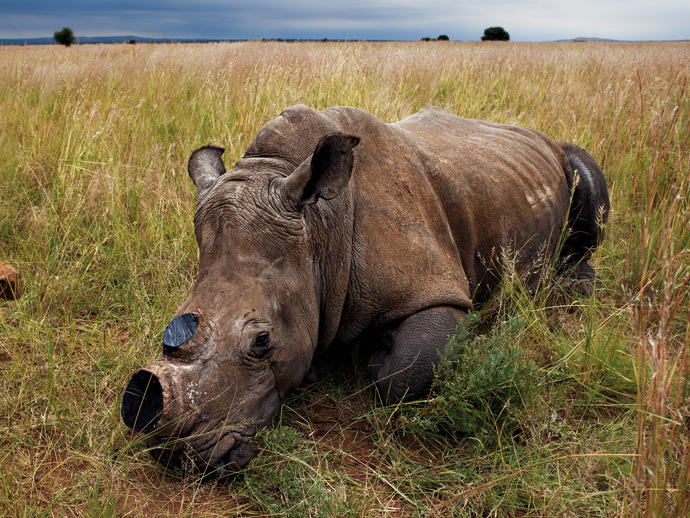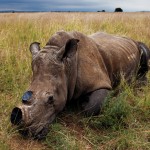 In the past, poaching of wildlife for bushmeat or sale of animal products was typically carried out by people living locally to wildlife habitats. Particularly in severely impoverished areas, poaching was done to feed and support families. In the last few years the face of poaching has changed. Poaching has become very sophisticated utilizing GPS, helicopters, and tranquilizers instead of tracking animals on foot and using snares or automatic weapons. Rangers, veterinarians, and researchers who have sworn to protect and conserve vulnerable and endangered species are the very ones who are now participating in their demise. Carcasses are left to rot while only specific parts like horn, ivory, and skins are removed for resale in the black market. How do we combat something when we no longer know what the face of our enemy looks like?
In the past, poaching of wildlife for bushmeat or sale of animal products was typically carried out by people living locally to wildlife habitats. Particularly in severely impoverished areas, poaching was done to feed and support families. In the last few years the face of poaching has changed. Poaching has become very sophisticated utilizing GPS, helicopters, and tranquilizers instead of tracking animals on foot and using snares or automatic weapons. Rangers, veterinarians, and researchers who have sworn to protect and conserve vulnerable and endangered species are the very ones who are now participating in their demise. Carcasses are left to rot while only specific parts like horn, ivory, and skins are removed for resale in the black market. How do we combat something when we no longer know what the face of our enemy looks like?
Southeast Asia has become the major destination for illegal wildlife products over the last 10 years. The need for animal parts such as rhino horn, bear bile, tiger blood and bone is being driven by use in Ancient Chinese Medicine. Although practices in Ancient Chinese Medicine are over 1,000 years old, claims of medicinal properties of animal parts are confounded and proven to be false. Regardless, the demand is increasing and directly reflected in the surge of poaching activity.
China is one of a few nations that have legalized tiger and bile farming. Animals are housed in facilities until they have matured and products are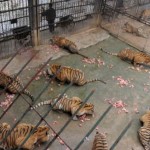 harvested. It was initially thought that poaching of wild animals would be curbed by regulated practices, but this has not been the case. Products from wild animals are thought to be more “potent” and therefore more money will be paid.
harvested. It was initially thought that poaching of wild animals would be curbed by regulated practices, but this has not been the case. Products from wild animals are thought to be more “potent” and therefore more money will be paid.
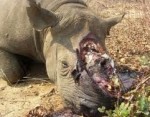 In 2011, poaching of wildlife was documented at an all time high. Record numbers of elephants and rhino were killed in natural habitat and on privately owned game ranches. The much sought after rhino horn is made of keratin; essentially this natural adornment is little more than fingernails and hair. It is not uncommon for captive animals within zoos to be anesthetized and horns removed for safety reasons; thus, the animal recovers and the horn is regrown. So, if modern poachers are already using tranquilizers to sedate animals for horn removal, why don’t they simple remove the horn and allow the animal to recover and regrow this prized possession for future harvest? Instead, poachers use chainsaws and machetes, not only removing the rhino horn, but also flesh and bone. In most cases the animal bleeds to death; however in a few horrific incidences the rhino awakens and is left to suffer excruciating pain until it dies or is euthanized.
In 2011, poaching of wildlife was documented at an all time high. Record numbers of elephants and rhino were killed in natural habitat and on privately owned game ranches. The much sought after rhino horn is made of keratin; essentially this natural adornment is little more than fingernails and hair. It is not uncommon for captive animals within zoos to be anesthetized and horns removed for safety reasons; thus, the animal recovers and the horn is regrown. So, if modern poachers are already using tranquilizers to sedate animals for horn removal, why don’t they simple remove the horn and allow the animal to recover and regrow this prized possession for future harvest? Instead, poachers use chainsaws and machetes, not only removing the rhino horn, but also flesh and bone. In most cases the animal bleeds to death; however in a few horrific incidences the rhino awakens and is left to suffer excruciating pain until it dies or is euthanized.
How then do we combat something that is essentially faceless? The same people sworn to conserve vulnerable species, which conservationists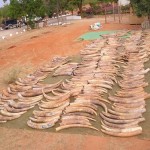 confer with at conferences and during field research missions, are now the ones responsible for this grisly practice. Do we target those individuals who perpetuate poaching by practicing Ancient Chinese Medicine? Or does blame lay with those actually removing the horn? Poaching is a multifaceted problem with an equally complex answer. Only through accountability, compassion, and education can we hope to make 2013 the year poaching was stopped.
confer with at conferences and during field research missions, are now the ones responsible for this grisly practice. Do we target those individuals who perpetuate poaching by practicing Ancient Chinese Medicine? Or does blame lay with those actually removing the horn? Poaching is a multifaceted problem with an equally complex answer. Only through accountability, compassion, and education can we hope to make 2013 the year poaching was stopped.
